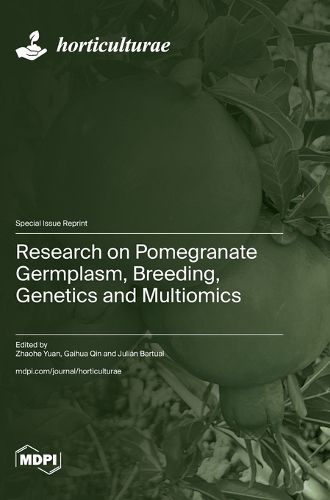Readings Newsletter
Become a Readings Member to make your shopping experience even easier.
Sign in or sign up for free!
You’re not far away from qualifying for FREE standard shipping within Australia
You’ve qualified for FREE standard shipping within Australia
The cart is loading…






This title is printed to order. This book may have been self-published. If so, we cannot guarantee the quality of the content. In the main most books will have gone through the editing process however some may not. We therefore suggest that you be aware of this before ordering this book. If in doubt check either the author or publisher’s details as we are unable to accept any returns unless they are faulty. Please contact us if you have any questions.
This Special Issue of Horticulturae presents ten studies on pomegranate, covering genetics, physiology, disease resistance, postharvest treatment, and cultivar phenotyping. These studies provide insights to advance breeding, quality enhancement, and cultivation practices, addressing the rising interest in this fruit. Genetics is a key focus, with research being conducted on the anthocyanidin synthase (ANS) gene family for pigmentation, R2R3-MYB transcription factors affecting flavonoid biosynthesis, and expansin genes influencing fruit texture. Together, these findings support breeding for improved nutritional and esthetic traits. Additionally, studies on the UDP-glycosyltransferase (UGT) and laccase gene families highlight their roles in bioactive compound production and structural resilience, respectively, aiding efforts to enhance pomegranate's health benefits and durability. Postharvest research includes the use of 1-methylcyclopropene (1-MCP) to prolong shelf life and resistance to anthracnose rot, promoting disease-resistant cultivars. Studies on reproductive development, such as miRNA involvement in pistil growth and phenotypic diversity across cultivars, contribute to selective breeding based on morphological and chemical traits. A review summarizes progress in pomegranate genetics and breeding, discussing challenges and future directions. Collectively, these studies enhance our understanding of pomegranate, guiding breeding, cultivation, and postharvest strategies to support industry needs.
$9.00 standard shipping within Australia
FREE standard shipping within Australia for orders over $100.00
Express & International shipping calculated at checkout
This title is printed to order. This book may have been self-published. If so, we cannot guarantee the quality of the content. In the main most books will have gone through the editing process however some may not. We therefore suggest that you be aware of this before ordering this book. If in doubt check either the author or publisher’s details as we are unable to accept any returns unless they are faulty. Please contact us if you have any questions.
This Special Issue of Horticulturae presents ten studies on pomegranate, covering genetics, physiology, disease resistance, postharvest treatment, and cultivar phenotyping. These studies provide insights to advance breeding, quality enhancement, and cultivation practices, addressing the rising interest in this fruit. Genetics is a key focus, with research being conducted on the anthocyanidin synthase (ANS) gene family for pigmentation, R2R3-MYB transcription factors affecting flavonoid biosynthesis, and expansin genes influencing fruit texture. Together, these findings support breeding for improved nutritional and esthetic traits. Additionally, studies on the UDP-glycosyltransferase (UGT) and laccase gene families highlight their roles in bioactive compound production and structural resilience, respectively, aiding efforts to enhance pomegranate's health benefits and durability. Postharvest research includes the use of 1-methylcyclopropene (1-MCP) to prolong shelf life and resistance to anthracnose rot, promoting disease-resistant cultivars. Studies on reproductive development, such as miRNA involvement in pistil growth and phenotypic diversity across cultivars, contribute to selective breeding based on morphological and chemical traits. A review summarizes progress in pomegranate genetics and breeding, discussing challenges and future directions. Collectively, these studies enhance our understanding of pomegranate, guiding breeding, cultivation, and postharvest strategies to support industry needs.